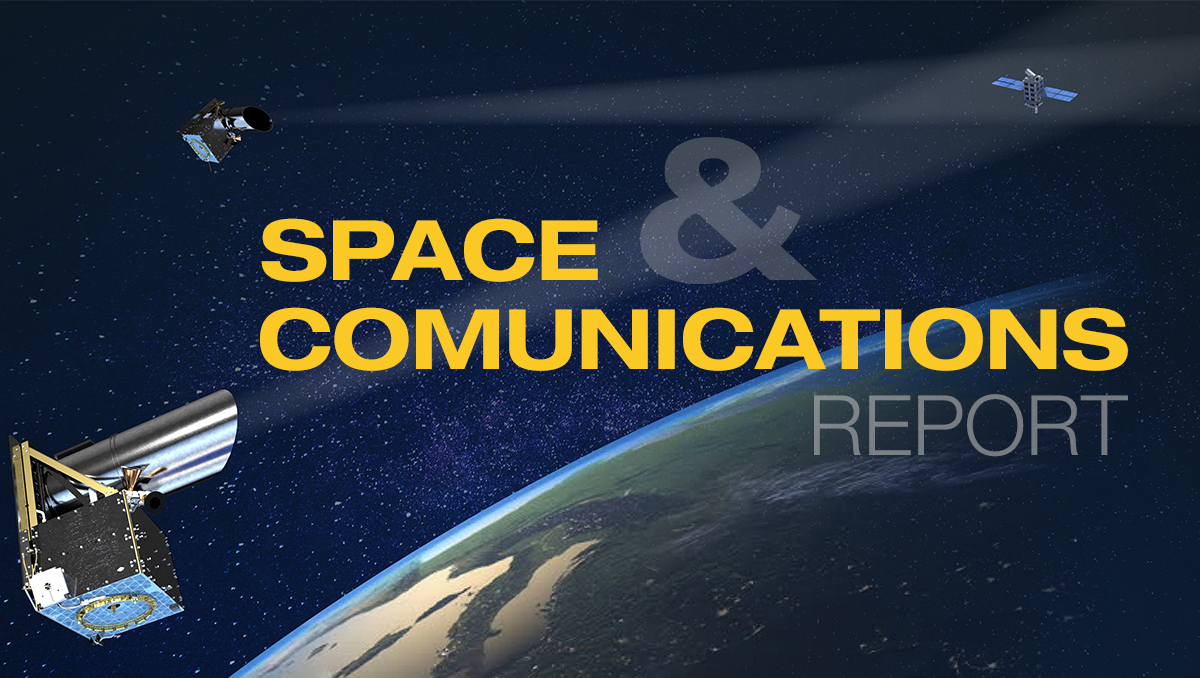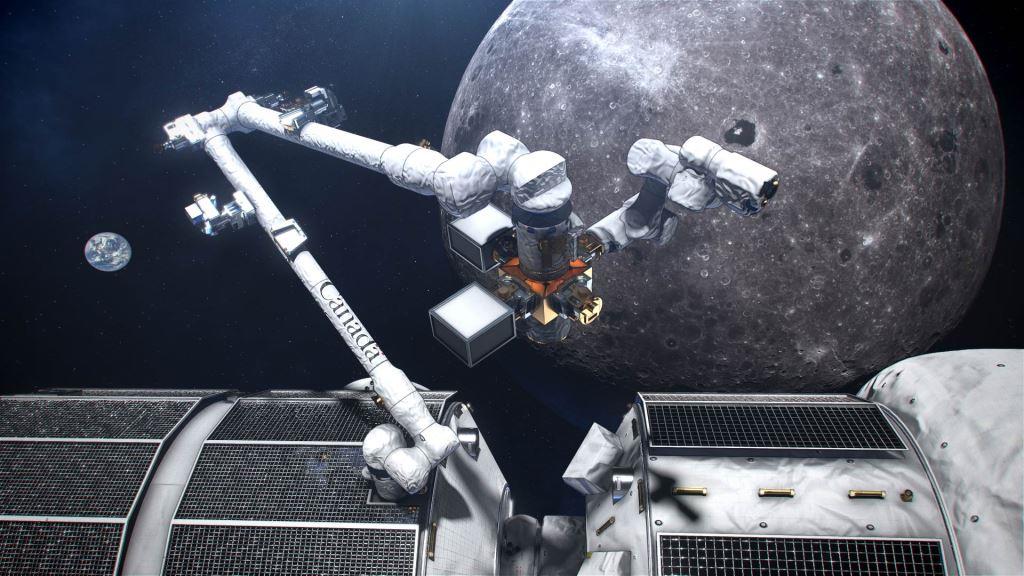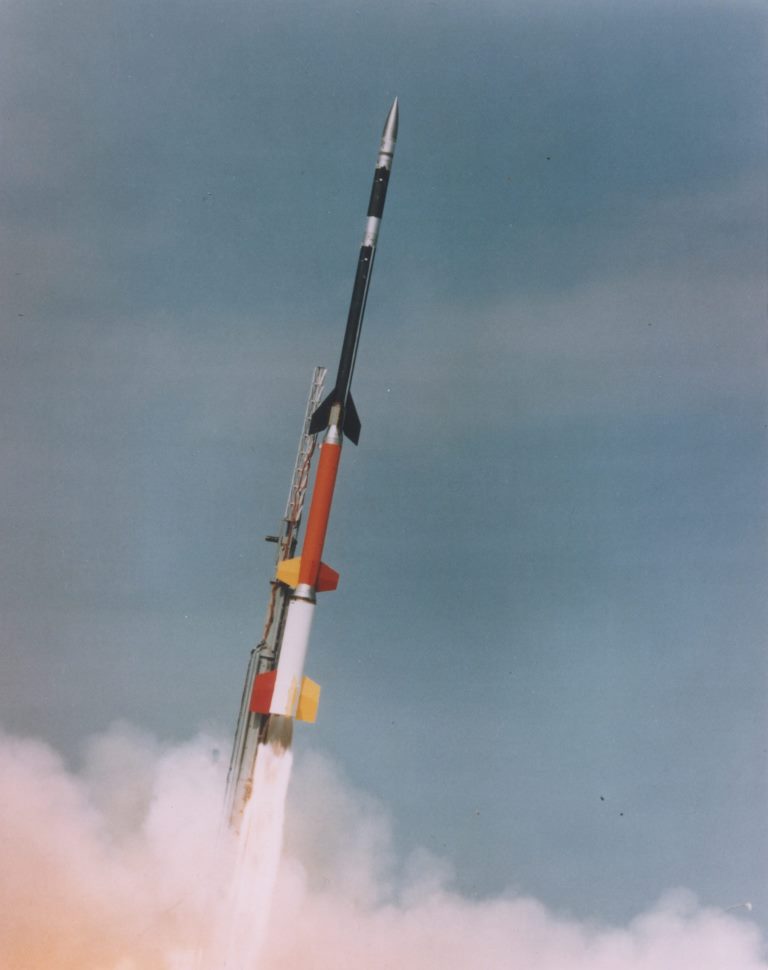SPACE & COMMUNICATION
BY JAMES CARELESS
SPACE EVADES COVID-19
Despite the pandemic, 2020 proved to be a robust
business year for Canada’s Space & Communications Industry
 There is no doubt that COVID-19 dominated and depressed business activities during 2020. Nevertheless, the Canadian space and communications industry managed to make progress during this most difficult year.
There is no doubt that COVID-19 dominated and depressed business activities during 2020. Nevertheless, the Canadian space and communications industry managed to make progress during this most difficult year.
In CDR’s annual look at this industry, there is lots of good news to share.
TELESAT PROVIDING INTERNET TO
CANADA’S INDIGENOUS COMMUNITIES
2020 was a period of substantial progress and positive news for the Canadian space industry, even with the pandemic underway.
One of this year’s biggest space industry stories occurred on November 24, 2020, whenTelesat Canada announced that it was combining with Loral Space & Communications to create Telesat Corporation, a new publicly-traded Canadian-controlled corporation. Under the deal, Telesat Canada and Loral will become subsidiaries of Telesat Corporation, which will be headquartered in Ottawa and led by Telesat Canada’s Chief Executive Officer Daniel S. Goldberg.
“Following the closing of the transaction (anticipated to occur in 2Q/3Q 2021), Telesat will have access to the public equity markets, providing increased flexibility and optionality to support our promising investment opportunities, including Telesat LEO, which will bridge the digital divide both at home in Canada and around the world,” said Goldberg. Two weeks prior to this announcement, the federal government and Telesat finalized a $600 million contract to provide Telesat LEO-based broadband internet access to rural, northern and indigenous communities across Canada at substantially reduced rates.
This isn’t all that went Telesat’s way in 2020. “Telesat U.S. Services, a wholly owned subsidiary of Telesat, also secured significant contracts with the U.S. Defense Advanced Research Projects Agency (DARPA)’s Blackjack program and Lockheed Martin for their work with the Space Development Agency (SDA),” said Michele Beck, Telesat’s Vice President of North American Sales. “Within the new contract with DARPA, Telesat will develop and conduct in‑orbit demonstrations of its commercial LEO constellation network, demonstrating interoperability with commercial and government networks through Optical Inter‑Satellite Links (OISLs), as part of Phase 2 of the Blackjack program.”
MDA TO BUILD CANADARM3
2020 was a positive year for MDA as the company, which is known for its Canadarm (Space Shuttle) and Canadarm2 (International Space Station) robotic arms entered its first year as a standalone Canadian space-based company. This status change occurred after MDA’s 2019 sale by Maxar Technologies to a consortium of Canadian investors led by Northern Private Capital.
“In robotics, the big news this year has been Canadarm3,” said MDA CEO
Mike Greenley. Canadarm3 is the centrepiece of Canada’s $2 billion contribution to NASA’s Gateway space station orbiting the Moon. MDA was chosen to build Canadarm3 on July 26, 2020.
"Our Government is committed to the future of space exploration and ensuring Canada remains a global leader in space robotics,” said the Honourable Navdeep Bains, Minister of Innovation, Science and Industry. “Our commitment to contribute Canadarm3 to the Lunar Gateway project will generate high‑quality jobs and economic benefits for Canadians while ensuring that our space industry continues to lead and grow.”
Although the Canadarm3 contract was undeniably MDA’s 2020 high point, the company had other successes during this pandemic period. For instance, MDA is designing a software-defined radio for Gateway’s power and propulsion element, plus ten Search and Rescue/Global Positioning System (SAR/GPS) repeaters for the U.S. Air Force’s next‑generation GPS III satellites.
“We’ve been working on that and developing the communication subsystem for Sierra Nevada Corporation’s Dream Chaser crew transportation module,” Greenley told CDR. Dream Chaser is a reusable spaceplane being developed to resupply the International Space Station (ISS).
MDA is now managing the trio of RADARSAT Constellation Earth observation satellites it built and launched for the Canadian government in 2019. “We also continue to operate the Sapphire satellite on behalf of the Government of Canada which provides space situational awareness of all the objects in orbit,” said Greenley.
OPTICAL & QUANTUM COMMS FROM HONEYWELL
Honeywell Aerospace is another Canadian space company that kept going in 2020 despite the many constraints of COVID-19.
“Our main focus this year has been to advance the optical communication and quantum communication programs that we have ongoing,” said Marina Mississian, Honeywell Aerospace’s Senior Director for Global Space Systems.
On the optical communication side, Honeywell has been working with Ball Aerospace to develop Optical Inter-Satellite Link (OISL) communication terminals, which employ lasers to send digital information between ground stations and satellites at extremely fast data rates. Offering much quicker transmission speeds than traditional radio transmissions – akin to how laser-driven fibre optic cables move data far faster than RF signals travelling over wires – laser-based ground/satellite communications are a key component of space-based broadband internet service.
On the quantum communications side, Honeywell is designing/implementing the Canadian Space Agency’s (CSA) Quantum Encryption and Science Satellite (QEYSSat) mission, under a $30 million contract with the CSA. Scheduled to be launched in 2022, QEYSSat will test the concept of quantum key distribution (QKD) in space. By using quantum principles to send single photons in various random quantum states, QKD will create virtually unbreakable encryption codes to enable truly secure communications.
MAGELLAN SUBSYSTEMS ON MISSION TO MARS

The ultra-reliable Black Brant sounding rocket motor, whose original version was designed and developed by Magellan Aerospace in the late 1950s, continues to be a strong performer for the company. In fact, the NASA Sounding Rocket Operations Contract (NSROC) program has been using Black Brant rockets for almost 50 years. This is probably because “the Black Brant remains the most reliable sounding rocket motor in the market today, with a success rate of 99.4% over the last 500 launches,” said Dan Pashniak, General Manager of Magellan Aerospace, Winnipeg (a division of Magellan Aerospace Limited).
In early 2020, Magellan welcomed the German Aerospace Center as a new Black Brant rocket motor customer. The German Aerospace Center is the national aeronautics and space research centre of the Federal Republic of Germany.
“In July 2020, Magellan saw our Power Control Units (PCU) and Command and Data Handling (C&DH) subsystems launched on a space mission to Mars,” said Pashniak. “Magellan’s flight‑proven PCUs and C&DH subsystems on this interplanetary mission will utilize expertise developed by Magellan for past and current Canadian Space Agency missions.”
According to the European Space Agency’s(ESA) February 2020 estimates, there are more than 8800 tonnes of man-made technology in orbit. This raises the spectre of in-orbit collisions like never before.
The ESA uses size to categorize the numbers of these man-made objects, which include functioning and inactive satellites, spent rocket boosters and fine debris caused by collisions and explosions. The agency estimates that there are 34,000 objects larger than 10 cm in orbit, along with 900,000 objects ranging in size from greater than 1 cm to 10 cm, and a staggering 128 million objects from greater than 1 mm to 1 cm.
NORTHSTAR PROVIDING “TRAFFIC-REPORTS” IN SPACE
To make matters worse, the ESA said that only about 22,300 objects in orbit are currently being tracked to identify possible collisions. This is why NorthStar Earth & Space’s (NorthStar) plan to intensively monitor ‘space traffic’ using a series of sophisticated satellites is such welcome news for the world’s space-faring nations. Clearly, the time has come for comprehensive ‘traffic reports’ from near-Earth space.
“In 2020, NorthStar announced it had contracted the build of its first three satellites of its debut ‘Skylark’ constellation for Space Situational Awareness (SSA) services to be launched in early 2022,” said Jean‑Philippe Arseneau, Northstar’s Chief of Communications and PR Strategy. “NorthStar will be the first commercial service to monitor space, from space, via a constellation of satellites with dedicated optical sensors,” he added. “With a secure data‑driven 3D catalogue of the entire space environment powered by advanced SSA analytics, NorthStar will deliver timely and precise Space Traffic Data, Collision Avoidance and Navigation Services to the global satellite community.”
COLLINS AEROSPACE’S CONNECTED BATTLESPACE
Combining both space and communications technology, Collins Aerospace was extremely busy in 2020.
A case in point: “Collins delivered a GPS Anti‑Jam system (DIGAR‑300) for trial and evaluation with the RCN to help them evaluate the Navy's ability to mitigate interference and adversary jamming of GPS signals,” said Lee Obst, the company’s Country Lead for C&AM Global & Government Affairs. As well, “Collins continued to deliver 1kW fixed‑site wideband‑capable HF radio systems (WBHF) to the Directorate of Joint CIS systems as part of the incremental renewal of Canada's strategic HF network,” he said. A total of 18 split‑site WBHF-capable systems with advanced modems will be in service by 2021. Collins will be helping the Navy test the ship-to-shore capabilities of these WBHF systems during Operation NANOOK in the Arctic during August 2021.
Under the IDEaS program ‘Mobilizing Insights in Defence and Security’ (MINDS), Collins is leading an industry/academic consortium to research and advise on DND's transition to a fully Connected Battlespace, including options for NORAD modernization in Canada. Meanwhile, “the Collins PRC‑162 two‑channel software‑defined manpack/vehicular tactical radio received export approval from the US in the summer of 2020, clearing the way for this radio to be considered as a potential tactical radio replacement for the Canadian Army,” said Obst. “This radio shares the same capabilities as the widespread ARC‑210 airborne radio that Canada is also fielding for the RCAF, offering the potential for easier air‑ground communications.”
AIAC HELPS NAVIGATE COVID-19
The above successes do not change the fact that 2020 has been a tough year for the Canadian aerospace sector as a whole.
In response, the Aerospace Industries Association of Canada (AIAC) has focussed on helping its member companies navigate the perils of COVID-19. As well, the association has been developing practical recommendations to keep the aerospace sector afloat during and after the pandemic.
“From the beginning of the crisis, we positioned AIAC as the interface between industry and governments,” said Jim Quick, the AIAC’s President and CEO. “We've also been working with one of the world's best aerospace consulting firms, Roland Berger, to get a comprehensive picture of what other countries are doing to support their aerospace industry, and then to develop a strategy for us here in Canada.”
Drilling down to the space industry, there are a number of pandemic-caused challenges that are making life difficult for the companies interviewed by CDR. One of these issues is cash flow. COVID-19 is stalling the deliveries of – and payments for – completed products.
For instance, Honeywell Aerospace’s deliveries to India have been stymied by lockdowns imposed to slow the virus’ spread there. “We've been ready to ship our hardware to India, but they're struggling to accept the hardware,” said Mississian. “This impacts our financials. If we can't ship hardware, we can't receive payment.”
Finessing COVID-caused supply chain issues is another constant challenge. “For some programs the challenge was in reducing the flow of product coming into the facility to account for decreased demand from our customers,” said Magellan’s Pashniak. “For other programs where our customer maintained production rates – and even increased production rates – the challenge was working through the issues of an unstable supply chain and transportation infrastructure.”
Meanwhile, the ban on international travel “has led to challenges in customer development, contract negotiations, program/milestone reviews, and acceptance on big programs where people need to get together and sign off on things,” Greenley said. “All of these activities had to be transitioned into virtual activities, which just became clumsier for everybody.”
GOVERNMENT NEEDS TO STEP UP
Despite the successes achieved in 2020, the Canadian space industry (and aerospace sector) has taken a serious economic hit from COVID-19. This is why the AIAC is calling on Ottawa to deliver an industrial support strategy and financial help.
To speed this process along, the AIAC has presented its recommendations to the federal government. “We're asking that they be considered and included in the government's pandemic recovery plan,” said Quick. What the AIAC wants is a long‑term strategy (“five to ten years”) that provides sufficient direction and federal support “to allow companies to continue to invest in space here in Canada,” he said.
The AIAC’s call for a ‘space recovery strategy’ is endorsed by Magellan Aerospace. Moreover, “Canadian government policy for space should be guided by the investment priorities of Canada’s defence policy (Strong, Secure, Engaged), the vision enunciated in Canada’s Space Strategy, and the findings of the Space Advisory Board,” said Pashniak. As a sign of good faith, “The Government of Canada could unequivocally demonstrate its support for the Canadian space industry by immediately starting the implementation phase of one or more of the priority space projects identified in Strong, Secure, Engaged.”
But even this may not be enough. “Beyond the immediate crisis, big challenges are ahead for the space industry, which necessitates the government’s attention for Canada to remain competitive on the global stage,” warned NorthStar’s Arseneau. Such attention needs to be backed by federal funding. “Robust and comprehensive support needs to be directed to the aerospace industry and the innovation of the New Space economy,” he said.
LOOKING TO THE FUTURE
2021 is on the horizon, and Canada’s space industry is looking ahead to this New Year and beyond with varying degrees of hope.
To MDA’s Mike Greenley, the Canadian space industry’s future looks bright. “We continue to see opportunities,” he told CDR. “People are continuing to advance their space programs and satellite systems. Both GEO (geosynchronous Earth orbit) and LEO people are continuing with their projects.”
“Technology-wise, the big trend is the transition from analog to flexible software-defined reconfigurable digital satellites that are increasingly being used in low Earth orbit,” Greenley added. “To support that, we continue to invest in digital technologies such as phased array antennas, channelizers and onboard processing to support our transition to the next generation of digital satellites.”
Mike Greenley also sees lots of new opportunities in space robotics as commercial and government operators launch lunar missions and look to Mars. He also sees a demand for in-orbit satellite servicing missions being delivered by spacecraft equipped with robotic arms.
Honeywell Aerospace sees growth possibilities in space-based communications, as businesses who told staff to work at home stick with this cost-saving approach after the pandemic ends.
“Everybody's working from home,” said Mississian. “Everybody is transferring big pieces of data across the internet. So enhanced communication has absolutely become critical and I think there's opportunities for us in this space.”
Honeywell is also expecting great things from its work in quantum communications/encryption and the CSA’s QEYSSat mission. “We're quite bullish on the market in terms of how it's going,” Mississian said. “We're also looking at international partnerships where we can apply what we're doing here in Canada and export them to other countries, whether it's other space agencies or organizations supported by those agencies.”
Collins Aerospace is counting on its many Canadian defence contracts to provide for a prosperous 2021. A case in point: “Collins is a key supplier to the major OEMs currently competing for the Future Fighter Capability program,” said Obst. “Regardless of the outcome, Collins will have a supporting role to play on this program.” The company is also working with DND/CAF to modernize Digitally Aided Close Air Support (DACAS) and improve the CAF's ability to execute digital missions with coalition aircraft, he noted.
Magellan Aerospace is very upbeat about 2021's business possibilities. “In the current (and near term) market there is a critical mass of commercial and government telecommunication, science, and earth observation satellite constellations/missions and space programs where Magellan space/satellite systems, subsystems, software, and services capabilities could be utilized,” said Pashniak. “There are also a number of Space Technology Development Programs (STDP) funded by the Canadian Space Agency where opportunities exist for Magellan.”
READY TO PIVOT
In making these positive predictions, space industry executives are mindful that the actual end of COVID-19 is in no ways known, and that other factors could come into play to complicate the expected post-pandemic recovery. Still, if there is one lesson they’ve learned during this crisis, it is how to ‘pivot’ quickly to keep up with changing market conditions as they arise.
Looking ahead, “the situation continues to be dynamic and the timing of any recovery is unknown,” Dan Pashniak observed. “The status quo going into 2021 is to adapt to the latest set of circumstances as they present themselves, and to be prepared for the new environment when recovery begins.”
At the very least, the many successes achieved by Canada’s space industry this year points to its players’ resiliency, creativity, and ability to ‘keep their eye on the prize’ no matter what chaos is raging around them. These are skills that should see these companies through to the end of COVID-19 whenever it comes, and position them to prosper in whatever Brave New World arises in the pandemic’s aftermath.
James Careless is CDR’s Ottawa Bureau Chief

